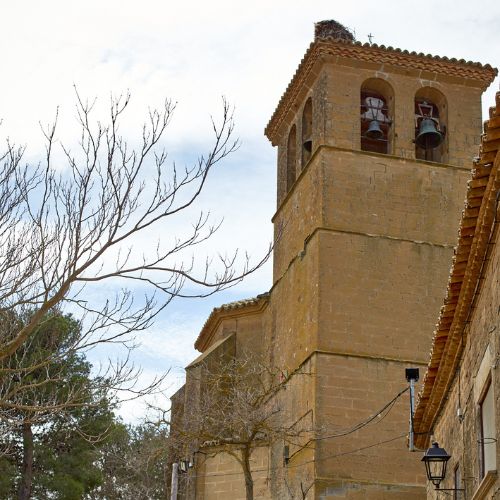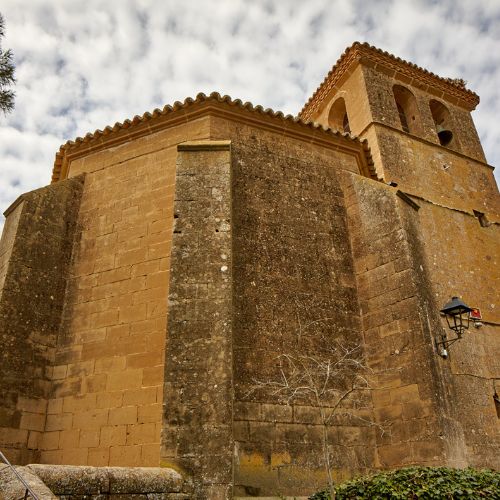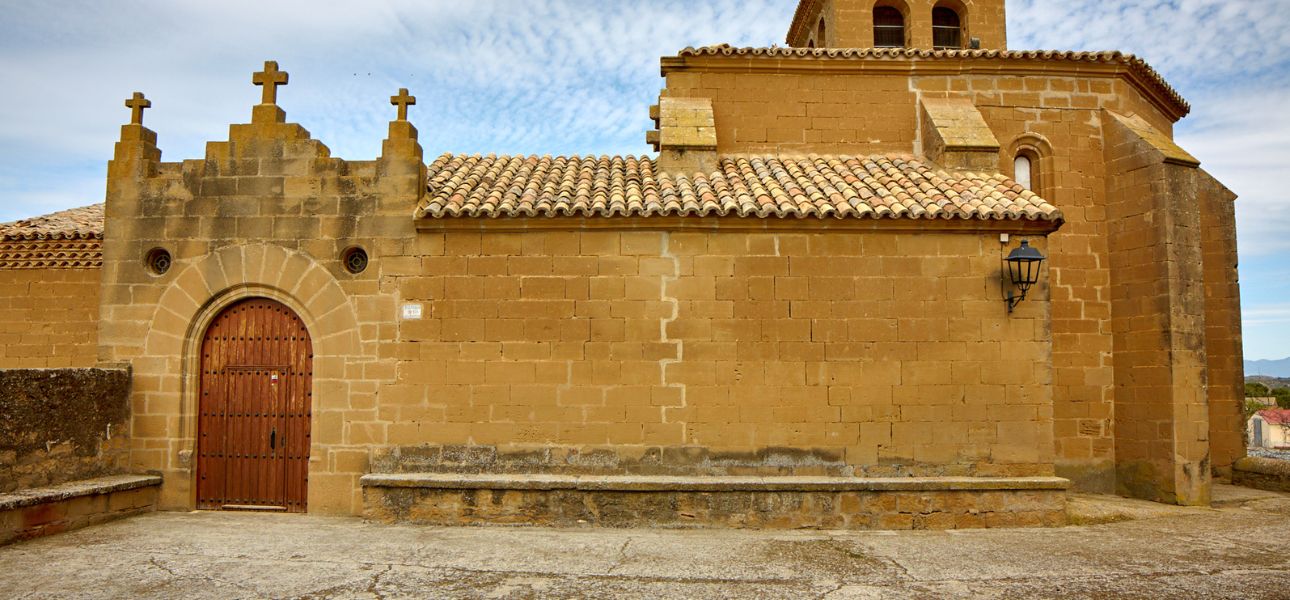Descripción
The name of my village says it all, Piedratajada or Pietallada, as it is written in Aragonese. It is located in a rocky valley, on a low hilltop, as its name suggests, surrounded by extensive dry plains. As the Iglesia de San Sebastián, I stand on the highest point of the village, on a rocky hill. With my imposing bell tower, I dominate the town, being a historical reference and throwback of our local history. I was built in the 14th century with a Roman style floor plan and extended in the 16th century with a Levantine Gothic apse, built to make my modest central nave larger, and making the building more grand. At the top of my main entrance, you will see three crosses, that appear as a Calvary to remember the old one that used to stand beside me, very close to the old cemetery. This one was very close to my building, at the start of the Las Pedrosas and Marracos roads, but it disappeared once I was renovated. Once inside, visitors will see a welcoming space, highlight by the clean, exposed stone. My main structure has a wooden gable roof, supported on arches. However, if you look towards the High Altar, you will see a magnificent polygonal Gothic ceiling, crowned with a finely crafted cross-vaulted roof. It houses the beautiful Mannerist style main altarpiece, dedicated to St. Sebastian and dating back to the sixteenth century, with a beautiful central sculpture of the saint. The entire altarpiece ensemble of the apse is in keeping with a harmonious balance that bestows the church’s interior with a unique beauty.
Le nom de mon village — Piedratajada, ou Pietallada en aragonais — en dit long. Niché dans une vallée rocailleuse, sur un monticule coupé, comme son nom l’indique, il est entouré de terres sèches étendues et plates. Quant à moi, l’église paroissiale de San Sebastián, je me tiens au sommet du village, sur une colline rocheuse. Référence historique et gardienne du temps et de l’histoire locale, je domine le hameau avec mon clocher imposant. Je fus édifiée au XIVe siècle selon un plan roman et agrandie au XVIe siècle avec une abside gothique levantine, construite pour étoffer les volumes de ma modeste nef centrale et me donner un air plus majestueux. Mon entrée principale est couronnée de trois croix rappelant l’ancien calvaire qui existait autrefois dans mes alentours, tout près du vieux cimetière. Celui-ci se trouvait à côté de mon édifice, là où démarrent les chemins vers Las Pedrosas et Marracos, et il disparut lors de mes travaux de rénovation. Une fois dans l’enceinte de mes murs, le visiteur découvrira un espace agréable où la roche apparente donne une grande sensation d’accueil chaleureux. Mon corps principal est surmonté d’un toit à pignon en bois, soutenu par des arcs. Cependant, si vous regardez vers le maître-autel, vous trouverez mon magnifique toit gothique polygonal, couronné d’une voûte d’ogives finement travaillée. J’abrite le magnifique retable principal, dédié à Saint Sébastien, réalisé au XVIe siècle dans le style maniériste, où la belle sculpture centrale du saint est mise en valeur. L’ensemble abside-retable maintient un équilibre harmonieux qui confère à l’intérieur de mon église une beauté singulière.
Foto a Foto








